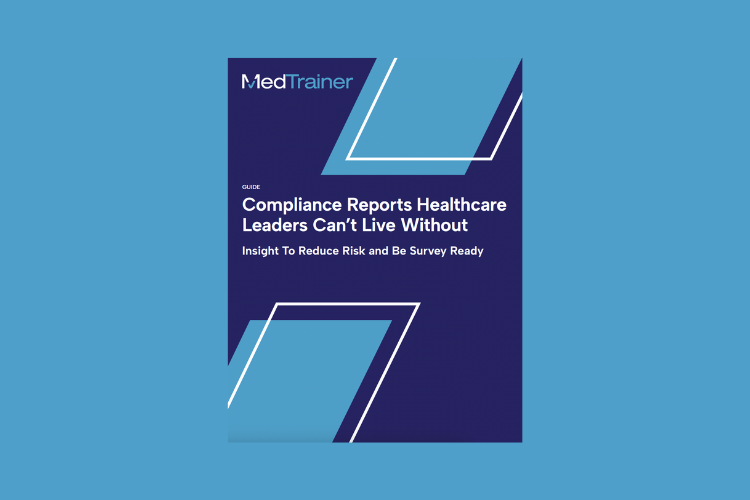When people seek healthcare, there’s a level of implied trust. They believe — at face value — that their physician has the education, training, skills, and experience to help them. This is why credentialing management is so important. Through credentialing, healthcare organizations can meet patient expectations by ensuring every physician is unequivocally equipped to treat them.
Credentialing isn’t just a one-time practice, either. Credentialing management involves recredentialing, to ensure providers are staying up to date with evolving best practices and standards. Let’s take a closer look at everything involved in credentialing management and why it’s so important for healthcare organizations to prioritize.
The Many Benefits of Credentialing Management
Credentialing goes beyond checking boxes to make sure physicians are up-to-standard and ready to practice. Good credentialing management opens the door to a wide range of benefits at both the facility and organization levels:
Compliance With Regulatory Standards. Credentialing management helps organizations maintain compliance with regulatory standards set by accrediting bodies, government agencies, and industry regulators.
Enhanced Patient Safety. By verifying credentials, organizations can mitigate the risk of incompetent or unqualified individuals practicing within their facilities. This promotes patient safety and reduces the likelihood of medical errors.
Improved Quality of Care. By ensuring that providers meet rigorous standards, organizations can enhance the quality of care delivered to patients, leading to better health outcomes and patient satisfaction.
Risk Mitigation. Thoroughly reviewing and verifying credentials helps organizations identify any gaps or issues that may pose risks to patient safety, such as expired licenses or malpractice claims.
Alignment With Payer Requirements. Effective credentialing management ensures compliance with payer requirements, reducing delays and denials in reimbursement processes.
Lever To Increase Revenue. The faster physicians are credentialed, the sooner they can be reimbursed by payers. It can cost practices up to $10,000/week when a provider is unable to see patients or bill insurance!
Increase Staff Retention. The fewer barriers there are between a physician and their ability to practice, the more likely they are to stay. Conversely, cumbersome credentialing and recredentialing can push them to look elsewhere for work.
Maintain Compliance and Accreditation. Fines, medical malpractice claims, and patient harm are concerns if credentialing isn’t properly managed. In the event of an audit, good credentialing management makes all the difference.
Generally speaking, good credentialing management practices translate into good operational practices. This, in turn, improves everything from the organization’s bottom line, to the patient experience, to the safety and compliance of a facility. Strong credentialing management processes are at the center of it all!
Take a closer look at the top 5 ways to improve your credentialing process.
What To Look for in Credentialing Management Software?
With so many moving parts and pieces in the credentialing process, it’s worth investing in credentialing management software. Software helps establish the process for a well-managed, repeatable credentialing framework and all the benefits that come with it.
If you’re on the lookout for credentialing management software, consider the following functions and capabilities:
1. Workflow Automations
The software should provide configurable workflows that automate and streamline the credentialing process. This includes automated notifications, task assignments, and status tracking. Workflow automation helps reduce manual errors, improve turnaround times, and enhance overall productivity. Also, look for features like automatic reminders for providers to upload documents, notifications when a provider is on an exclusion list, and reminders when a provider’s credentials are set to expire.
2. Highly-Customizable Reports
The software should provide pre-built and customizable reports that offer insights into key metrics such as application status, provider qualifications, and compliance rates. Analytics features can help identify trends, measure performance, and support data-driven decision-making. Some reports to look for:
- Credentialing Reports that outline privileges, verifications, exclusions, and documents.
- Enrollment Reports that provide an overview of provider enrollment statuses.
- Exclusions Reports that include both regular SAM or OIG-LEIE exclusion checks.
- Licenses Report that tracks licenses that require continuing education or refreshers.

The best compliance and credentialing reports to surface critical insights and keep you survey ready.
3. Provider Document Management
Look for software that offers secure storage, version control, and document sharing. It should support the efficient capture, storage, and retrieval of provider-related documents, including licenses, certifications, malpractice insurance, and other relevant credentials. More importantly, it should bring everything together in a centralized repository that’s easy to search and navigate. Bonus points for the ability to customize the list of required documents for each location, so every affiliated provider uses the same preset document list.
4. Proven Workflows
Credentialing management software should provide end-to-end support for the entire credentialing process, including initial application, verification of credentials, privileging, and ongoing monitoring. It should handle all aspects of provider data management, document collection, and workflow automation. In short, no matter where they’re at in the process, you should always be able to tell what tasks need to be completed, what documents remain, expiration dates, etc. for each provider.
5. Security and Compliance
Data security is paramount in healthcare. Credentialing software should adhere to industry standards for data encryption, access controls, and secure transmission. It should also comply with relevant regulations — such as the Health Insurance Portability and Accountability Act (HIPAA) — to ensure the protection of sensitive provider and patient information.
How To Select Credentialing Management Software
When it comes to actually choosing credentialing management software, healthcare organizations should practice good due diligence in making sure their final choice provides the level of functionality and efficiency needed to manage credentialing accordingly. Here are some tips to keep in mind:
- Assess Your Needs. Consider factors such as the volume of providers, desired workflow automation, integration with existing systems, and compliance requirements.
- Define Key Features. Consider factors such as document management, automation, compliance tracking, reporting and analytics, security, and customization options.
- Request Demos. During demos, ask questions, seek clarification on features, and evaluate how well the software aligns with your organization’s needs.
- Evaluate Cost and ROI. Assess the overall value the software offers in terms of time savings, improved efficiency, reduced errors, and enhanced compliance.
- Review Vendor Support. Look for implementation assistance, training, ongoing technical support, and the availability of updates and upgrades.
- Consider Implementation Timeline. Discuss the implementation process with the software providers and understand the expected timeline for deployment.
- Make a Decision. Evaluate software against your defined criteria and select the option that best-meets your requirements and offers the most value.
Once you’ve made a decision, create an implementation plan. Assign responsibilities, set timelines, and communicate with relevant stakeholders. Ensure proper training and change management strategies are in place to facilitate a smooth transition to the new credentialing management software.
Consider MedTrainer Credentialing Software
For many organizations, MedTrainer is the best solution to credentialing management. With all the data you need in one place, MedTrainer organizes and accelerates the process with cloud software and a team of specialists who can manage every critical step in a streamlined credentialing process. Customers say that, on average, MedTrainer speeds up credentialing by three weeks — per provider!
From provider data and files to upcoming action dates and automatic reminders, MedTrainer provides a single place to enter, import, and store mandatory provider information and documents based on National Committee for Quality Assurance (NCQA) guidelines. Schedule a demo today and see for yourself!
